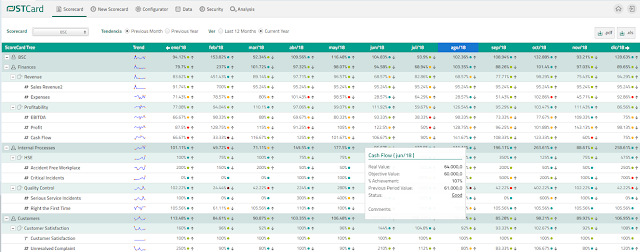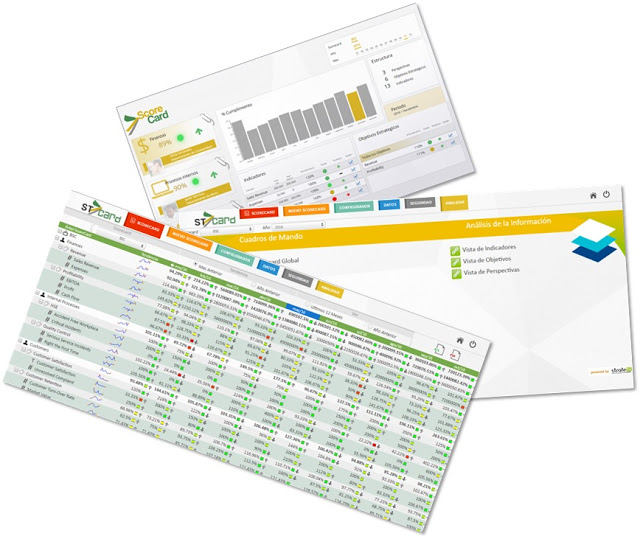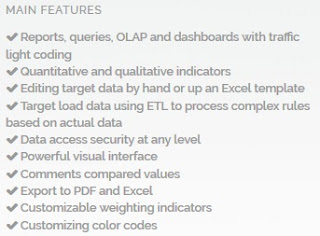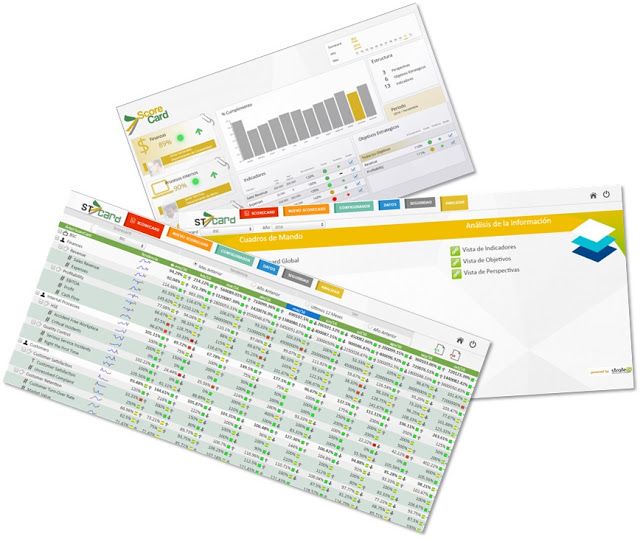
The improvements in this version of STCard, an open source based solution, are focused on user interface for panel and dashboard and also some enhancement in performance and close some old bugs:
- Import with ETL
- New KPIs always in red bug
- Tooltips and characters solved
- Export to PDF
- Modify colors of new scorecard
- Some other minus bugs...
It works with Pentaho and embeded in web applications
You can manage your organization with a powerful KPIs control with Balance Scorecard using STCard
You can see it in action in this Pentaho Demo Online and as a part of LinceBI suite
STCard doesn´t requiere anual license, you can manage unlimited users and it´s open source based.
STCard includes professional services (training, support and maintenance, docs and bug resolution - so, you have high enterprise level guaranteed -)
Interested? contact Stratebi or LinceBI

See a Video Demo:
About main functionalities:
STCard works on top of Pentaho, is the best tool for managing your KPIs (Key Performance Indicators), targets an keep track of your Balance Scorecard strategy

Fully integrated with Pentaho CE, you can leverage all the power of this Open Source BI Suite
STCard is an open source tool developed by StrateBI for the creation, management and analysis of Scorecards.
A Scorecard is a global management system within an organization that allows you to have a view of it based on a number of perspectives. All these as a whole define the vision and strategy of the organization.
A Scorecard is a global management system within an organization that allows you to have a view of it based on a number of perspectives. All these as a whole define the vision and strategy of the organization.
To define a Scorecard you have to define a clear strategy:
- Strategic Objectives for the units of the organization.
- Indicators (KPI’s) that mark the fulfillment of the strategic objectives.
The main features of STCard are:
- Flexibility: A Scorecard is always referred to an organization as a whole, but with STCard we can create a scorecard for a specific area of the organization. For example:Treasury Financial Area, Consolidation, Suppliers, etc. On the other hand, the concept of flexibility is applicable to the creation of a scorecard in terms of the number of strategic perspectives and objectives. As many as you like. The philosophy of Kaplan and Norton is not limited to 4 perspectives: customer, financial, internal business procedures and learning and growth. You can create as you need
-
Flexibility does not break with the original philosophy. A scorecard in STCAD consists of a weighted hierarchical structure of 3 levels:
- Perspective: from what point of view we will see our system. For example, financial, quality, customers, IT, etc.
- Strategic Objective: what is our goal. For example, increase profitability, customer loyalty, incentive and motivation HR, etc.
- Indicator (KPI): the measure or metric. Indicators can be quantitative or qualitative (confirmation / domain values), and these always have a real value and a target value.
For the launch of the ScoreCard we can consider three scenarios:
- This scenario has a rapid implementation, and only requires the definition of a load processes to obtain the information of the indicators of the organization and adapt it to STCard.
-
The organization lacks a system / repository of indicators.
This variant requires more consulting work, because in the organization, first, a pure BI project must be carried out to obtain those indicators to be dealt with later in STCARD.
For example: data sources; ETL processes; System / repository of indicators; Load processes in STCard. -
Immediate start-up:
It is the fastest alternative, only requires installation / configuration and training. Data management is done through Excel templates. No additional consulting work required.
Users set values through Excel templates, where data is filled. These values are loaded into STCARD and after this, it is the users who interact with STCARD.
These are the main features of STCard:




